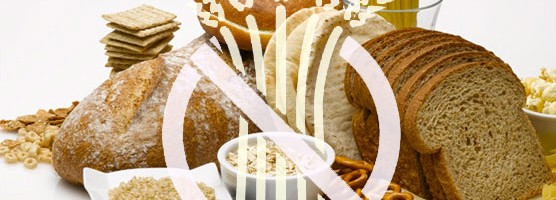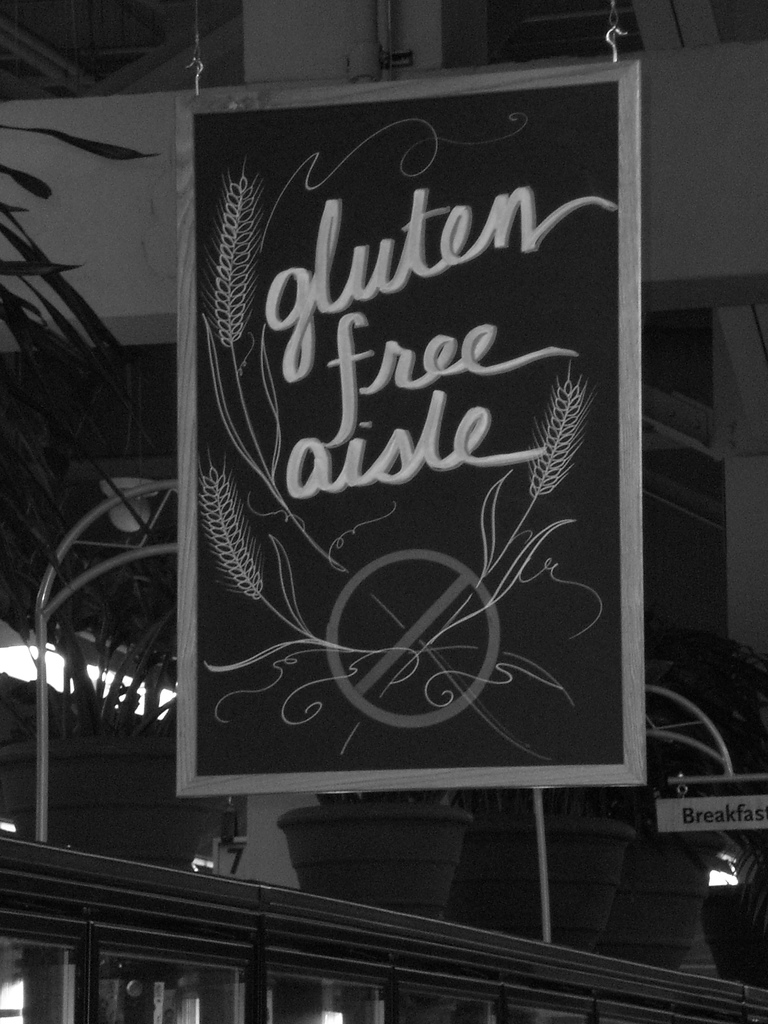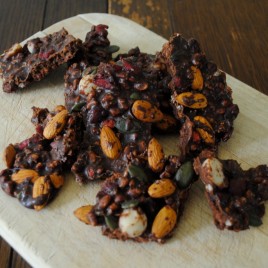“Gluten-free” does NOT equal healthy. There we go, I’ve said it! Let me explain; and fear not, below I will provide you with 3 super-easy tips to help you make the right decisions when doing your food shop!
It is a fabulous thing that the possible negative effects of gluten are becoming more well known1,2. However, it has sadly led some people, through no fault of their own, to naively come to associate the term “gluten free” with the notion of “healthy”. Unfortunately, this is by no means always the case.
For those suffering from coeliac disease or non-coeliac gluten sensitivity, a gluten-free diet is of vital importance3. As such, it might be considered a blessing that the manufacture of gluten-free convenience foods is an industry growing enormously4,5.
Producing a gluten-free convenience food for sale is a savvy thing to do – there is an ever-increasing demand; but manufacturers are not taking their responsibilities seriously enough. Their priorities will often, inevitably, be for appearance6, imitation and low cost over health benefit. It is this that leads to the addition of many extra chemicals that we should and can certainly avoid.
For people succumbing to the marketing powers of these manufacturers, they are sadly being cheated. What I’m talking about here is the array of gluten-free “breads”, “biscuits”, “cakes”, etc. in your standard supermarket. For a start, they often taste worse than cardboard! Seriously! Don’t just take my word for it7. Secondly, consuming some of these heavily processed convenience foods offers little to no nutritional value and is accompanied by a host of additives and preservatives that we do not want inside us!
The terrifying reality is that these gluten-free products may be doing people harm, and, in many cases, more harm than good. Even without the issues of cardboard-texture and scary additives, these foods often contain very high levels of sugar or salt.
So let’s move beyond the doom and gloom, what is the answer?
I can hear you now…”but I don’t have time to make my own”, “but I really love bread”, “my son/daughter won’t eat anything else”… Ouch! What we need is a just a few little changes to our habits. If we consider it a non-negotiable that we cannot buy these nasty packaged items that are not fuelling our nutritional necessities, we WILL find healthier alternatives.
Our number ONE aim in the pursuit of health heaven should be for a lack of over-processing. Remember, vegetables are natural and do have super powers! They can help you to feel energised, happy and able to take on anything, with a strong immune system. Always keep that in mind.
So, as promised, 3 super-easy tips to make instant, valuable, health-promoting changes:
1. Check the ingredients.
Before it goes in the shopping basket, turn it over and check the ingredients list. If it is super long and features a bunch of items you can barely pronounce, chances are it’s not going to do you much good. Beware of the classic tricks of labelling with less familiar words (e.g. fructose/sucrose/dextrose = sugar)8.
2. Swap the “free-from” aisle for the vegetable aisle!
Instead of searching for “gluten-free” products, fill your basket with foods that are inherently gluten free such as meat, fish, rice, nuts, fruit and vegetables.
3. Get some exciting healthy snacks.
Build up a supply of yummy, quick and easy snacks that will promote your health instead of detracting from it. It is the craving for snacks in times of weakness that will often send people down the dark path of buying one of these convenience products, so make it EASIER for you to make better choices. Raw chocolate, vegetable sticks with hummus, a handful of raw nuts or dried fruit, roasted chickpeas or, better yet, some home-baked delights like these if you do have the time to have some fun times in the kitchen.
For those searching for gluten-free foods to eat, there is much more to know than what I’ve discussed here, but these are a few simple principles you can rely on and stick to…and PLEASE walk away from the gluten-free concoctions masquerading as food in your supermarket!
Do you have any tips or techniques you use to find healthy gluten-free foods?
Have you been tricked by clever packaging only to be disappointed by taste and texture and left not feeling your best?
Do you worry about friends or family who eat gluten-free foods but are likely lacking nutrients because they depend too heavily on processed gluten-free foods instead of whole, healthy, real foods.
Leave your comments below, I’d love to hear from you!
P.S. There are, of course, some companies out there genuinely motivated to creating healthy gluten-free snacks and doing a great job of it. Always using whole, unprocessed real foods is preferable, but when you get used to checking ingredients lists you’ll come to be able to distinguish the healthful from the health-less!
References:
1. Perlmutter, D. (2014) Grain Brain: The Surprising Truth About Wheat, Carbs, and Sugar – Your Brain’s Silent Killers. London: Yellow Kite.
2. Davis, W. (2011) Wheat Belly. Emmaus: Rodale Inc.
3. Holmes, G. (2013) Non coeliac gluten sensitivity. Gastroenterol Hepatol Bed Bench. 6(3): 115–119.
4. Gallagher, E. (ed.) (2009) Gluten-free food science and technology. Chichester: Blackwell Publishing Ltd. pp. 9-13.
5. Rourke, K and Tirone, A. (2007). Celiac Disease: Continuing Awareness and Market Growth. Last accessed 28th May 2014.
6. Ngemakwe, P. N. et al. (2014). Advances in gluten-free bread technology. Food Sci Technol Int. 2014 May 16. pii: 1082013214531425. [Epub ahead of print]
7. do Nascimento, A. B. et al. (2014). Gluten-free is not enough – perception and suggestions of celiac consumers.Int J Food Sci Nutr. 65(4):394-8.
8. Jaret, P. Reading the Ingredient Label: What to Look For. Last accessed 28th May 2014.



One Response to What you need to know about gluten-free foods
My health inspiration: The UnDiet Cookbook review | Veggie Superpowers! says:
[…] and to hear Meghan’s take on all the many confusing health questions out there. Should I eat gluten? What about dairy? Am I vegetarian, or vegan, or paleo or just a fussy eater?! What I didn’t […]